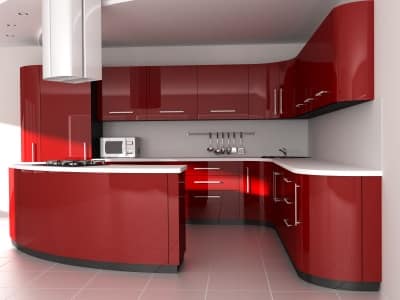Managing your kitchen renovations
For most homeowners, price is the most daunting aspect of kitchen renovations. The fear of “blowing the budget” can end up being the deciding factor in the quest for a new kitchen. Instead of enlisting a kitchen design company, you can save a heap of cash by managing your own kitchen renovations. Decisions, decisions The first […]

For most homeowners, price is the most daunting aspect of kitchen renovations. The fear of “blowing the budget” can end up being the deciding factor in the quest for a new kitchen.
Instead of enlisting a kitchen design company, you can save a heap of cash by managing your own kitchen renovations.
Decisions, decisions
The first thing you should do is decide on your budget and make a list of everything you want and need in your new kitchen – this should include the fittings and fixtures.
You also need to think about materials. Do you want to go for timber, veneer, laminate, stone, metal or polyurethane? What type of flooring will you need, and what about lighting and colours? And how about the layout?
Ask the experts
If you’re starting to feel a little overwhelmed by your kitchen renovations, it’s wise to seek some professional help. A qualified designer can help you maximise your kitchen’s space, storage and aesthetics.
Recognising your limits doesn’t have to mean throwing in the “project managing” towel. Plenty of kit and flat-pack kitchen renovation companies (including Ikea) have designers standing by to offer advice. Some companies even offer a “check measure” service and will come out to your house to double-check your kitchen’s dimensions.
Be warned, though, even with a check measure, it’s often a case of “all care, no responsibility.” Once a benchtop or splashback has been cut to size, there’s no returning it.
Understanding the elements
If you’ve purchased a standard flat-pack or kit kitchen, it will probably turn up on your doorstep in pieces – or, more accurately – in boxes.
Kitchen companies generally have a list of installers they can put you in touch with – but it’s up to you to take care of the rest of the kitchen renovations.
An installer will fit the “shell” of your kitchen, i.e. the cabinetry and panels, but isn’t qualified to do any of the tricky plumbing and electrical work required in kitchen renovations.
Who are you gonna call?
As project manager, it’s your job to organise and coordinate all the tradespeople and ensure everything runs smoothly and happens on time. So, who do you need to call, and for what?
- Plumber: A plumber is required for sink and dishwasher installation. If you’re undertaking extensive kitchen renovations, you might need a plumber to move pipes.
- Electrician: You’ll need an electrician to install lights, power points and exhaust fans.
- Gas Fitter: Gas fitters are typically needed for the installation of gas hot water systems – as well as any gas appliances.
- Tiler: A tiler may be required if you opt for a tiled splashback or floor.
- Glazier: You need a glazier if you’re installing a glass splashback.
You may also need to call on a painter and plasterer for the final touches of your kitchen renovations.
Perfect fit
Selecting a dodgy business could cost you time and money. You will need to have total confidence in the company you employ – so do your research thoroughly. To ensure your kitchen renovations are being completed by qualified professionals, look through the business’ portfolio and ask for testimonials or referrals from previous clients. Don’t forget that you’re the one in charge, so be firm about your expectations!